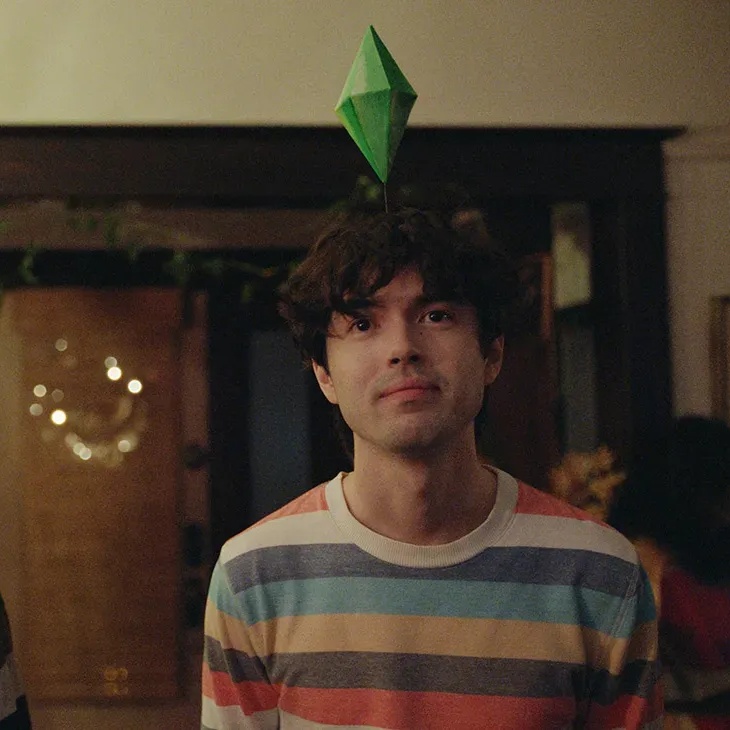As someone who’s been attending London Art Week for years as part of the India Art Fair team, I can safely say this year was different. Right from the serpentine immigration queues at Heathrow, which became an unofficial welcome ceremony for the Indian art fraternity, to the fact that most of our colleagues and artists were participating on the main stage, in a very significant capacity, this was our year. Across museums, fairs, and collateral exhibits across the city, South Asian art was visible, tangible, and its presence, electric.
ADVERTISEMENT
India’s art frat takes over London
From major showcases at Frieze to dinners hosted for South Asians at the Barbican, this year was a win for representation
The Imaginary Institution of India
© Eva Herzog Studio / Barbican Art Gallery

The Imaginary Institution of India
© Eva Herzog Studio / Barbican Art Gallery

© Eva Herzog Studio / Barbican Art Gallery
Kicking off the week was the utterly fantastic exhibition, The Imaginary Institution of India, presented at the Barbican Centre with the Kiran Nadar Museum of Art. Poetically curated by Shanay Jhaveri—the first non-British person to be appointed Head of Visual Arts at the Barbican—the seminal exhibition is a power-packed emotional milestone exploring the years between the Emergency in 1975 and the nuclear tests in Pokhran in 1998. From Rummana Hussain’s broken terracotta pots, used as a metaphor for the widespread communal violence India witnessed then (this hit home now more than ever) to Bhupen Khakhar’s luminous paintings tenderly evoking queer love and desire, more than 30 of India’s most dynamic artists transport you to the making of India as we know it today, through its darkest and brightest moments.
And then there was the sit-down dinner hosted within the Barbican’s iconic conservatory terrace, presided over by Kiran Nadar and the directors of this historic institute. In a 40-year-old garden, amid 1,500 species of plants and trees, some rare, others, endangered, some tracing their homes to the bushlands of South Africa, others, to the coasts of Brazil, the Indian art fraternity sat down, elbow to elbow—eating, talking, exchanging notes, and discussing the week to come. You couldn’t help but feel that this marked a historic moment for South Asian art and artists.
The must-see exhibit is on until January 2025.
Homegrown design at PAD London
Even the rain couldn’t put a dampener on my PAD London visit the next day. This is the fair that brings leading voices in contemporary design to Mayfair’s posh and privileged Berkeley Square. In a sea of design from across the globe, Vikram Goyal’s The Flow—a distinctively dark and moody collection—was a standout. The Delhi-based designer uses repoussé to evoke the fluidity of flowing water, with brass surfaces reflecting the dual nature of stillness and movement in consoles, cabinets, and side tables.
Next up, æquō, the collectible design gallery created by founder Tarini Jindal Handa and creative director Florence Louisy. The showcase here includes pieces by international designers who collaborated closely with partner craft workshops across India. My absolute favourite is The Slab, a collection by Belgium-based Destroyers/Builders, who reinterpret India’s heritage metal repoussé in hand-carved teak blocks covered in German silver.

But that’s not all the South Asian content at PAD. The newest initiative at the fair, SUPERJEWELLERS shines the spotlight on haute luxe indie designers, and India’s Studio Renn is among the five shortlisted designers from across the world. But the most joyful moment is to be found at Galerie Maria Wettergren’s booth, where Dhruv Agarwwal’s ‘Bloom’, a chandelier created using Channapatna wooden toys, acts as an immediate pick-me-up. To cap the designer-heavy fair, the South Asian art frat got together once again, this time over shared plates of piping-hot late-night dumplings, in the warmth of old-school China Town.

Strong messages at Frieze London
The main event, of course, is Frieze London. And as every art fair veteran knows, you need to prep right for preview day. First tip: comfortable footwear. You will average over 20,000 steps a day. Second tip: eat before you go. Fortify yourself. It’s how the fair brunch tradition started—this year, we met at a local pub, with colleagues from our extended art fair family, to carb load for the busy day ahead.

Atul Dodiya's Cabinet VI

Ashfika Rahman's The Power Box

Zaam Arif's 'I seek nothing'
Frieze is a behemoth of an art fair that stretches across swathes of London’s iconic Regent’s Park. It was split into Frieze and Frieze Masters, with Frieze Sculpture serving as a bridge between the two, and I started my day with the former. This was far from the first year that Indian galleries are exhibiting at Frieze, but the scale and positioning of South Asian art and artists this year was unprecedented. And you see this as you walk in and spot the first booth visible from the main entrance—Experimenter gallery from Kolkata, presenting a poignant solo exhibition, Fragments from a Nightmare, by Berlin-based visual artist Bani Abidi. Through photography and drawings, Abidi engages with the horrors of war.

Next came the Delhi galleries. At Nature Morte is a stellar exhibit featuring large works from contemporary giants—Jitish Kallat, Bharti Kher, and Subodh Gupta, to name a few. Vadehra Art Gallery is as understated as it is powerful, with Shilpa Gupta, Balkrishna Doshi, and Zaam Arif’s moving figurative, dream-like paintings. From Mumbai, there is Project 88, with Mahesh Baliga’s gentle paintings that play with light, and Rohini Devasher’s cosmic explorations.
Over at Frieze Sculpture, Ashwini Bhat’s biomorphic ceramic creations were complemented by a calla lily bell sculptural exploration titled titled ‘What Will It Take ?/ For Us to Awake?’. Jhaveri Contemporary showcased drawings, sculptures, and textiles, working with practices that engaged with community, indigenous traditions, and ecology.

Jhaveri also featured in Frieze Masters, displaying vivid works in glorious colours from the 1960s by Balraj Khanna. Gallery Chemould’s showcase at Frieze Masters was a solo by one of India’s most important living painters, Nilima Sheikh, as part of The Studio, curated by Sheena Wagstaff. The Studio recognises exemplary work by artists engaging with historical material.
Quiet time at the home of Rajan Bijlani
Between the sensory overload of art fairs, you will need a moment of calm. And that’s where the almost meditative exhibition at developer Rajan Bijlani’s home comes in. A curator and collector, Bijlani is deeply engaged with Jeanerette and Corbusier furniture and Chandigarh modernism. In his historic townhouse, previously home to Fonthill Pottery and potter and activist, Emmanuel Cooper OBE, Bijlani presented an exhibition titled Syncretic Voices. The presentation unites diaspora artists and designers of South Asian heritage. The exhibit is by appointment only and is on till November 1.
The perfect wrap to the week came with a performance essay by Himali Singh Soin, with music by David Soin Tappeser and Byron Wallen, at the historic Westminster Chapel, presented in collaboration with the Alserkal Arts Foundation and the Delfina Foundation. At the heart of the essay is Soin’s 2023 manifesto, On Translucency, that explores the delicate interplay between human and non-human survival. It was a fitting way to end my time in London, a chance to contemplate and think about bigger questions and to really understand how the arts have the power to drive real change. It reinforced my belief that our artists need to be free; they need to be able to create and to dissent.
This week was by far the busiest it has been for the South Asian arts community in London. There was a palpable feeling of having broken through tokenistic representation and into the mainstream with purpose and power.
Umah Jacob is the Director of External Relations & Outreach at the India Art Fair


